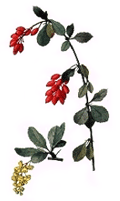
Bearberry
Introduction
This fact sheet provides basic information about bearberry. Bearberry was first documented in The Physicians of Myddfai, a 13th century Welsh herbal, it was also described by Clusius in 1601. The plant has a long history of medicinal use as a remedy for urinary tract infections and bladder infections in the United States.
Common Names
Bearberry, kinnikinick, mealberry, hog cranberry, sandberry
Latin Names
Arctostaphylos uva-ursi
What It Is Used For
- The plant has the following claimed properties: anti-lithic, aromatic, astringent, disinfectant, diuretic, lithontripic, sedative (renal), stimulant (mild), tonic, urinary antiseptic. It has been used to treat arthritis, back pain (lower), bed wetting, bile problems, bladder infections, bloating, bright's disease, bronchitis, cararrh of the bladder, cystitis, diabetes (by removing excessive sugar from the blood), diarrhea, fevers, fluid retention, gallstones, gonorrhea, headache (smoked), haemorrhoids, indigestion, kidney stones, kidney infections, liver problems, lung congestion, excessive menstration, nephritis, obesity, pancreatitis, prostate gland weakness, rheumatism, chronic urethritis, vaginal discharge, vaginal diseases, and water retention.
How It Is Used
Medicinal substance derived from the leaves and berry of the plant.
What the Science Says
- It should not be used by people who are pregnant, breast feeding, nor in the treatment of children (under 12) and patients with kidney disease. Drug interactions have been recorded with diuretics, as well as drugs that make the urine acidic (such as ascorbic acid and Urex).
Side Effects and Cautions
- Bearberry is relatively safe, although large doses may cause nausea, green urine, bluish-grey skin, vomiting, fever, chills, severe back pain, ringing in the ears.
Sources







